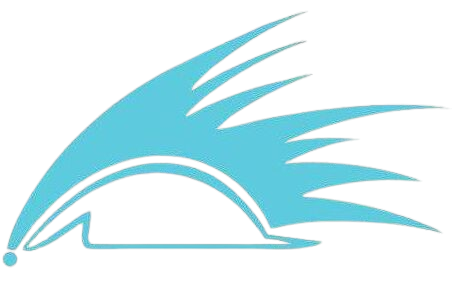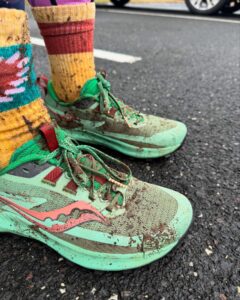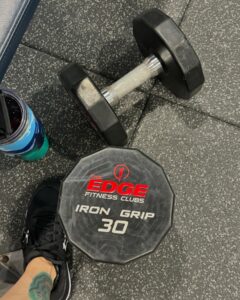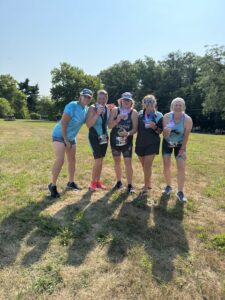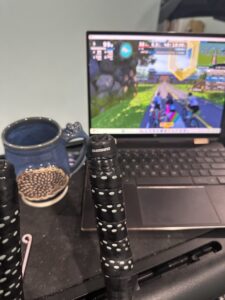Welcome to my day in the life of Transition Caption, IRONMAN Western Mass 70.3 point of view. When it comes to taking on the Captain role be prepared to commit.
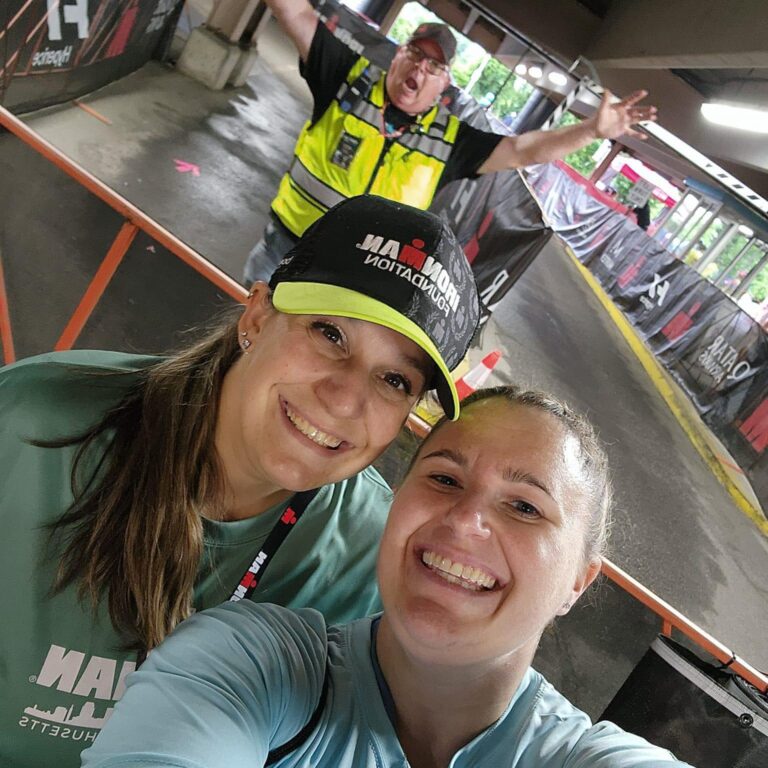
Many perks come with taking on a Captain role at an IRONMAN event, and you better be ready to put in the leg work to earn them, literally. The volunteer director will begin reaching out to the Captains about 6 months before the race. THAT is when your shift starts.
4-6 months from Race:
- The volunteer director will email links to the Captain “dashboard”. This is where we go for updates on meetings, course/race updates, Grant information, and links to our volunteer pages.
- Recruiting: depending on the area you are the captain for, you may have 1 or multiple shifts. It is part of your role as Captain to fill these open spots. I was the Captain of Transition and my shift was race morning 4 am through 5 pm. I at least have 1 shift covered all day! I also had morning, mid-day, and afternoon shifts to fill looking for a minimum of 33 volunteers.
- Attend Captain’s meeting: Super high-level meeting going over race basics. For Western Mass, we discussed where the biggest changes to the course were from the previous year. This is where we learned this was the last time Gatorade would be an on-course option. As a coach, THESE are the key things that I am tuning into and are important to bring back to my fellow coaches and athletes. Training with what the course is and what will be on the course is so important. No, Ironman is not keeping these things a secret, and of course, it would all be public, but timing is everything! The sooner we can get information to our athletes, the better.
1 month from the race:
- Continue recruiting volunteers, AKA begging online, posting on forums, begging friends and family.
- Grants available: At Ironman Western MA. Community Grant funding was available to volunteer groups of 10 or more that are part of a non-profit organization. Applications are required and details are available on the race website.
- Not all Ironman races have Community Grant funding available, check with your volunteer director.
- Another Captain meeting: Last minute course updates, any volunteer areas of concern, and race day logistics for the Captain and their volunteers.
- Grants available: At Ironman Western MA. Community Grant funding was available to volunteer groups of 10 or more that are part of a non-profit organization. Applications are required and details are available on the race website.
4 days before the race:
- In-Person Captain Meeting: This is a fun one! This is when all the Captain’s escape their little Zoom boxes and get to meet with the Ironman staff at a local restaurant. The goal of this meet and greet is to connect the Captain with their area’s staff members to get all the specific need-to-know details.
- I was STOKED to see I had my buddy Bruce again! This was my 2nd year as the Transition Captain. Bruce and I ran that bad boy like a well-oiled machine! We knew we had this on lockdown! Having a strong team partner can make or break your day. You are, after all, volunteering and donating your time so it is important to also have some fun with it!!
- SWAG: Another perk that comes with being a Captain…SWAG…..Yes, you get an extra fancy Volunteer shirt that says Captain on the back. You also get a pretty sweet jacket with the race logo and an all-access badge with your name on it and everything! Very official…
Day before the race:
- Being Transition Captain comes with its perks, I come to transition the day before to get a lay of the land and see what I am working with. Ironman Western MA was in a parking garage which was a first and unexpectedly fantastic. No matter what the weather did, we were protected. Coming to transition early is also a chance I have to engage with the athletes. This part I LOVE. There are always a lot of questions about bike racking, race morning, logistics of finding the bike out of the swim, and so SO many more. This is where I always realize how many people come into this distance having never done a triathlon before. Go big or go home I suppose!
- Pro Tip: Do not rely on volunteers to tell you all the race details the day before the race.
- Read the Athlete guide
- Go to the Athlete briefing
- Read the athlete guide again, on the app for the most up-to-date details
- Pro Tip: Do not rely on volunteers to tell you all the race details the day before the race.
Race Morning:
- 3:15 am: I am not a morning person.
- 4:00 am: Arrive at the parking garage and am not at all surprised to already have a gaggle of athletes eagerly awaiting entry into transition. We officially opened at 4:30, however, if I had enough volunteers, I would open the gates early. I met up with my buddy Bruce and was super happy to be greeted by my volunteers eager and ready to go! We reviewed the logistics of the transition and the expectations for supporting the athletes.
- 4:20 am: Transition opens and the vibe is great! Again, we are in a parking garage! There is music, people are smiling, the water temps are wetsuit legal, and all is good. The volunteers are killing it. I was so lucky to have had extra volunteers; enough that we could open a 2nd entry point and improve the flow of traffic. Another Perk alert: Seeing athletes race morning. Checking in with athletes before the race to get a feel and give a little pep talk is always a bonus. This is also another time when all the newbie athletes are asking lots of questions from transition set-up to how to pin their bib under their wetsuit (don’t). If you are a coached athlete, these are things your coach should be reviewing with you ahead of race morning. I am happy to help talk through it with racers, however, only 2 of the volunteers including myself in that am shift were racers so athletes should not depend on getting that information on race day.
- 5:45 am: Transition Closes and we need to sweep and kick people out of transition. It’s not always fun being the Captain, but rules are rules. There is a short lull and the volunteers and I get a brief moment to get some food and hydration before the swimmers start coming in. Another perk is a private porta john, because, well y’all reading this know…
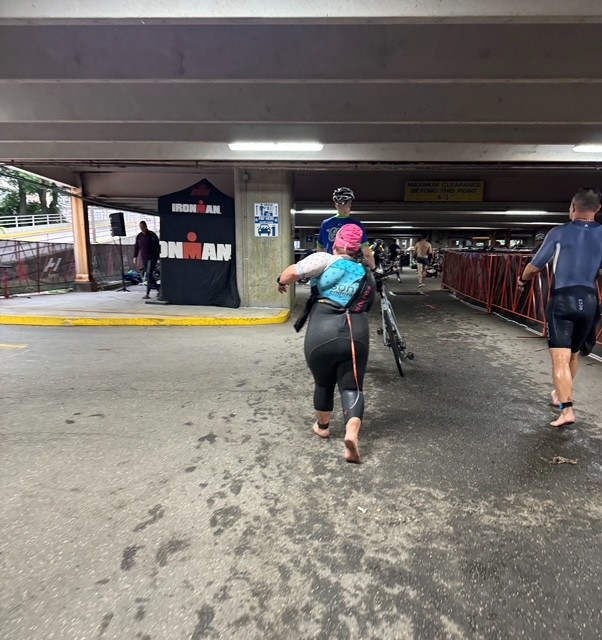
- 6:20 am-ish-3 pm:
- Swimmers start coming in and it’s a blur…non-stop from here…swimmers coming in need to do a loop around the garage grab their bike and head out. Equal distance for everyone. This is the part that athletes struggled with the most. Athletes were cutting through porta johns, and squeezing between bike racks to not have to complete the entire distance. As an athlete, this was so disappointing. As the Transition Captain, this was so frustrating. I had to station security at the “breach points” because it became such a problem.
- When the athletes were out on the bike the weather turned rough. The temperature dropped, the wind picked up, and the skies opened up. When athletes came in off their bikes I assisted so many with removing helmets, tying their sneakers, and zipping coats. The weather was too much for many athletes and I have never seen so many turn in their chips. I had a system that if an athlete handed a volunteer their chip, they immediately texted me the bib number. This information needed to get to timing ASAP for safety reasons. To give an idea of how bad it was, I received 6 bib numbers in less than 5 minutes, and those are the athletes who made it back to transition off the bike and were choosing not to go out on the run.
- 10:30 am: Typically, transition does not open until the afternoon for athletes to come and get their things. However, after talking with my man Bruce and how the day had gone for so many, we decided that we would open it up early to let those who could not finish the race get home and warm up. This is not typical of most races and not something that should be expected. This was purely circumstantial and you would not want the circumstances that lead to it.
- PM: During the chaos of the day I have had a series of awesome volunteers that are literally willing to do anything it takes to support the athletes. In having conversations with them some were killing time while loved ones were racing, some were thinking of one-day racing, and some were just looking for something to do. I would like to give a special shout-out to my bestie Katie who spent the entire day with me as my un-official co-captain.
- The Finale: The fun part, the athletes start coming in rocking the bling! Now the celebration and grunt work begins. While congratulating each athlete and sharing a bit in their celebration, the deconstruction of transition begins. Oh yes, being the Captain of Transition is more than the managing of people! Multiple things happen in transition as the race winds down and the volunteers in the PM shift are certainly bringing the muscle!
- As bikes are removed from the racks, volunteers peel your race number sticker from the rack bar
- Cleaning/collecting of any items left behind
- Lost and found pile
- Garbage – Please be a courteous athlete and clean up after yourself
- Break down bike racks as they empty
- Break down water tables and any other stations
- Load truck with bike racks
- Once the bikes are out, the trucks are loaded, and the volunteers are checked out, your day as Captain is done!
From start to finish during my shift as Transition Captain this year I took over 40k steps. That was in a very small space on concrete. It is a long and tough day and I love every minute of it. Being able to be in the weeds of it all and help athletes is something that makes me emotional to recall. There is something magical about race day and being able to be a part of the experience for someone else. Whether you are the shoulders that help walk an athlete to their bike and lean on while they warm up, or the volunteer peeling the bike sticker off the rack, giving your time that day is what helps the race go on. As a coach, I find the experience rewarding in that I can give back to my community and I am also able to achieve my USAT service to sport credit at the same time. It also doesn’t hurt to have some direct line of sight on the race…
